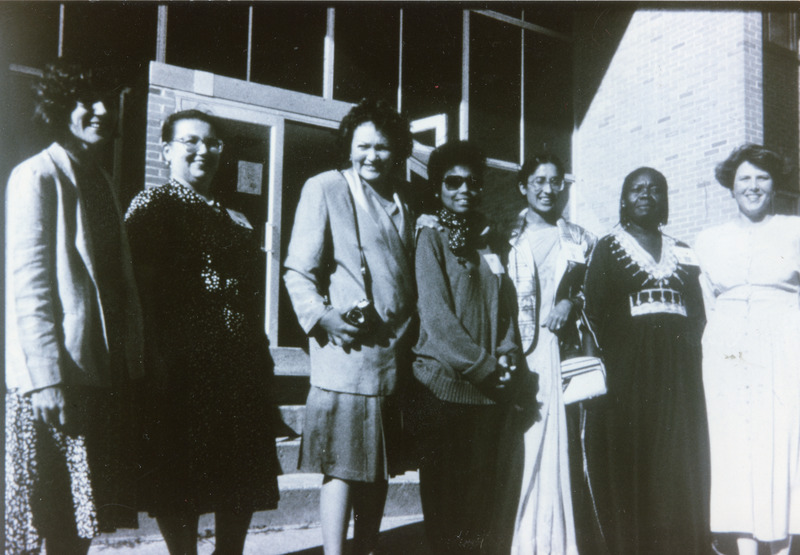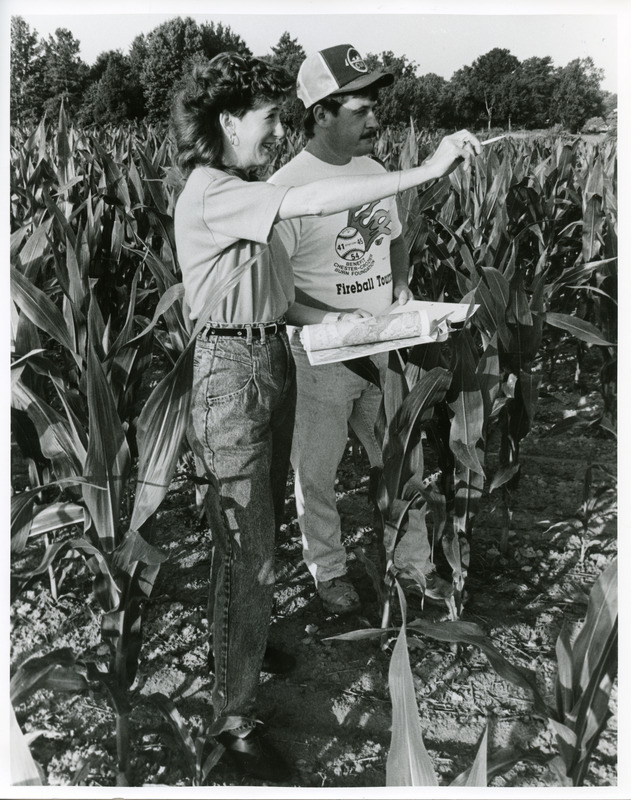Women in Natural Resources
A Collection of Journals and Photographs of the Women in Natural Resources (WiNR), an organization of University of Idaho faculty and staff
Contents: About Women in Natural Resources | About the Collection | Sources | Tech
About Women in Natural Resources
The publication of the WiNR journal began as an informal newsletter between some of the women faculty in the University of Idaho’s Department of Forestry. It was born out of necessity for these women to find solidarity with other women professionals as they entered the male-dominated Forestry field. Subsequently, the newsletter allowed these women to share their experiences of hardship, success and discovery. Originally called Women in Forestry, the journal was initiated by Linda Donohue of the North Central Forest Experiment Station in December of 1979. The first motto of the journal is as follows:
The intent of the newsletter is to build a communication and support network among career oriented women in Forest Service - not just for professional Foresters, but for all interested women. We hope it succeeds.
This sentiment would echo throughout future volumes and later encompass women of all Natural Resource fields, including those inside and outside the University, private or public sectors, local to international levels. As the group sought to integrate more fields, they changed their motto to “for professionals in forestry, wildlife, range, fisheries, recreation, and related fields” and additionally changed the journal’s name to Women in Natural Resources. It continued to cover a broad scope of submissions: personal experiences, research, history, surveys, conference papers, art and poetry.
Dixie Ehrenreich, managing editor of WiNR from 1983 to 1999, was also instrumental in supporting the first three women at the University of Idaho to receive tenure in Forest Resources: Molly Stock, Jo Ellen Force, and Lauren Fins. Dixie, Molly and Jo Ellen would be key contributors and supporters of the journal throughout the 1980s. When Molly finally stepped down as contributing editor, Karen Lyman took her place for the rest of the print publications, alongside Lei Bammel, until 1998. Many of the journal’s interviews were conducted by Daina Apple, member of the Women in Land Management Agencies (WILMA). DeAnn Zwight was the long-standing cartoonist for the journal, filling most volumes with expressive drawings of women’s experiences working in Natural Resources. Even Dean John Ehrenreich, Dixie’s husband, contributed to the journal as its business manager from 1990 to 1994. Eventually, Dixie resigned as managing editor in 1999 to allow Sandra Martin, former research scientist for the USFS, to lead the helm. By 2000, WiNR transitioned to a digital format. There are many more long-standing, active contributors to WiNR not detailed here; you can learn more about them and read some of the digital-only articles from the Historical Notes1 in the Sources section below. The journal finally ended in December 2013, leaving a thirty-four year legacy of collection material.
About the Collection
This Special Collections Summer Fellowship project was supported through generous donations from Gary and Carolyn Strong and Dixie Ehrenreich. Flori Tulli was chosen to process the Women in Natural Resources collection, UG 83, and to create a digital collection. Flori spent three months not only rehousing the materials into archival folders and boxes, she got to know the history behind the collection and some of the women involved. Flori interviewed three of the instrumental women behind the journal, Dixie Ehrenreich, Jo Ellen Force, and Lauren Fins. A transcript of the conversation with Jo Ellen is included in this collection:
In working with these materials, a story slowly formed - one about capable women who wanted to pursue their passions. Those passions happened to be within the male-dominated fields of Natural Resources: unfamiliar career-territory for women in the 1970s. But like the intrepid explorers they are, these women pushed onward and were met with a wide-range of reactions from their male colleagues: some supportive, others dismissive, and some, adversarial. From its fruition to its end, this publication aimed to serve as a community for women in Natural Resource fields, serving as an example and empowering them to succeed.
Sources
-
Historical Notes: These historical references are legacy pages created by the Women of Natural Resources, including brief comments from editors and columnists on Life Experiences and Advocacy for Gender Equity(Archived: https://perma.cc/38MA-EZDS) and a sample of Past Articles(Archived: https://perma.cc/6HQ6-YV2U), published online only between 2001 and 2013. ↩
Technical Credits - CollectionBuilder
This digital collection is built with CollectionBuilder, an open source framework for creating digital collection and exhibit websites that is developed by faculty librarians at the University of Idaho Library following the Lib-Static methodology.
Using the CollectionBuilder-CSV template and the static website generator Jekyll, this project creates an engaging interface to explore driven by metadata.


